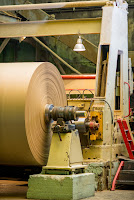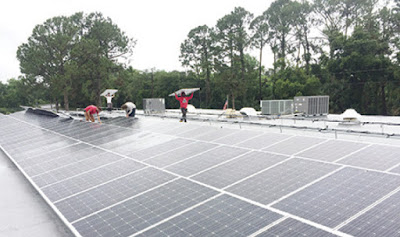 |
| Pulp and paper plant. |
Until the invention of recovery boilers in the early 20th century, black liquor was often simply released into waterways. Black liquor recovery boilers allowed paper manufacturers to recover and reuse the inorganic chemicals and extract energy from the pulping residues.
 Reliable, continuous measurement of black liquor solids content is a subject of considerable importance to the pulp industry. The solids content of liquor introduced into a recovery furnace can have a pronounced influence on firing behavior. Current trends toward better control of the recovery furnace for reasons of safety and reduced air emissions require a greater degree of control over incoming solids content and appropriate adjustment of operating conditions to handle variations in solids content. This, in turn, requires a reliable method for continuously monitoring solids content.
Reliable, continuous measurement of black liquor solids content is a subject of considerable importance to the pulp industry. The solids content of liquor introduced into a recovery furnace can have a pronounced influence on firing behavior. Current trends toward better control of the recovery furnace for reasons of safety and reduced air emissions require a greater degree of control over incoming solids content and appropriate adjustment of operating conditions to handle variations in solids content. This, in turn, requires a reliable method for continuously monitoring solids content.Instruments such as inline process refractometers successfully measuring black liquor solids concentration continuously. These instruments have the dependability, accuracy, and reliability to augment safe operation of recovery boilers. Refractive index-type instruments are more widely accepted and far more successful with less maintenance requirements than other types of instruments used for black liquor solids measurement, and have proven reliable and accurate for automatic monitoring of black liquor solids concentration.






